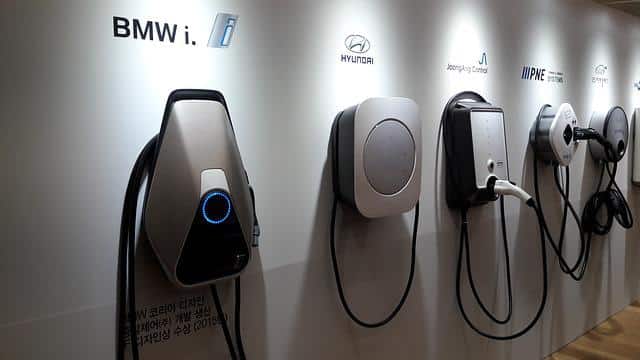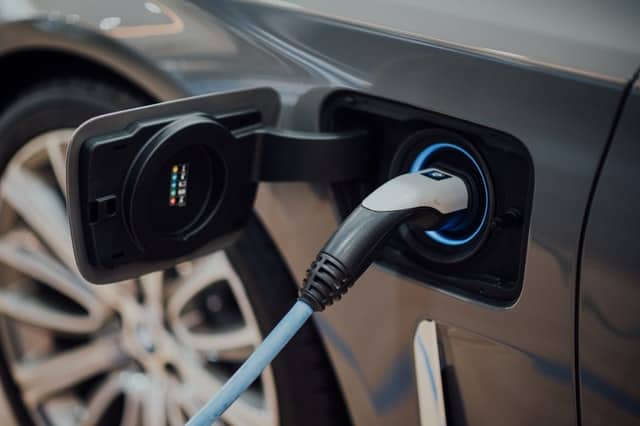Introduction – Do All Electric Cars Use The Same Charger
Do all electric cars use the same charger? The short answer is no, but it turns out there’s an enormous amount of standardization and compatibility. All electric cars can connect to the very widespread Level 2 type charging stations via the standard SAE J1772 connector. SAE stands for the Society of Automotive Engineers, an industry group that sets standards so manufacturers generate greater value by creating an ecosystem of compatible cars and products like chargers.

The biggest deviators used to be Tesla’s Supercharger stations which were restricted to Telsa owners. However, to address that, launched in late 2021 is a pilot Supercharger program for non-Tesla cars, documented on Telsa’s website about the pilot program, and following in 2023, the Superchargers were featured as part of a new government agreement to become more widely available, though not without technical challenges. So what’s the bottom line?
Telsa EV Owners Can Access All Charging Stations
If you own a Telsa EV, you can access both Tesla Supercharger stations and non-Tesla charger stations. To access the non-Telsa charger stations, a Telsa driver needs the J1772 adapter. Tesla Superchargers forms the second largest network of charging stations in the US. Superchargers are also not like standard Level 2 chargers because they use DC output for fast charging speeds.
Ford And GM Cars Gained Access Tesla Chargers As Of 2023


Two pieces of good news however. In July 2022 in a memo about EV charging from the White House, President Biden announced that Telsa has a plan to open up its Superchargers to all electric vehicles. Telsa also announced earlier in 2023 on its website that non-Telsa supercharging programs are underway, including a list of countries participating in these programs.
Then following, in mid 2023, we learned that Tesla has struck up partnerships with Ford and General Motors is a game-changer for the electric vehicle (EV) industry. This move will not only reshape the future of EV charging infrastructure in North America but also positively impact the adoption and reliability of electric vehicles on a broader scale.
The agreements made between Tesla, Ford, and GM have unlocked a critical door: access to the Tesla Supercharger network for Ford and GM’s electric vehicle owners. This significant development means that the reach of Tesla’s robust Supercharger network is now expanded to a broader audience, making EV ownership for Ford and GM owners a lot more convenient.
Tesla’s charging stations, for instance, use a proprietary connector that’s not directly compatible with other EVs. As part of the agreement between Tesla, Ford, and GM, one would expect some form of hardware adaptations. There are two primary possibilities:
Tesla could offer adapter hardware at Superchargers: These adapters would allow Ford and GM EVs to use Tesla’s proprietary charging ports. Tesla has already developed such an adapter for CHAdeMO, so this concept is not unprecedented.
Integration of Tesla’s charging tech into GM and Ford vehicles: This could mean either modifying the vehicles to include a Tesla-compatible charging port or offering a built-in adapter solution. This would require significant collaboration and design changes, but it would make charging at Superchargers seamless for Ford and GM EV owners.
Non-Telsa Ev Owners Can Only Access Non-Telsa Charging Stations With A Few Exceptions
If you own a non-Telsa EV, you can access all non-Telsa Level 2 charger stations because of the universal compatibility of the J1772 standard. ChargePoint is the company that owns the largest network of charging stations. You won’t be able to use a Telsa Supercharger station with the exception of pilot programs and the news for Ford and GM cards above.
By now you will have discerned that there are two aspects of an electric vehicle (EV) car charger that are most important. First, there are 3 types of charging stations which have specs for the amount of power they produce: Level 1, 2 (the one we mentioned), and 3. Second, there is the “connector” also known as the “plug” or “adapter” that joins the charging station to the EV.
Electric car chargers come in various shapes, sizes, and power capacities. The sort of charger you’ll require is determined by your car’s make and model and your charging requirements. For example, if you plan to charge your car regularly at home, you might opt for a Level 2 charger, which offers faster-charging speeds than a Level 1 charger. Level 1 is such a slow charging method that overnight you’d only be able to generate 40-50 miles of range after 10 hours of charging.
Alternatively, if you only need to charge your car occasionally on the go, a Level 1 charger might be sufficient. In short, there is no one-size-fits-all answer regarding electric car chargers. However, with a little research, you should be able to find the perfect charger for your needs.
Are Electric Car Charging Stations Universal?
There are three main types of electric car chargers:
Level 1 chargers are the slowest and are typically only found in residential settings. When these chargers are charging your car, expect that every hour, your car will gain an additional 4-5 miles of range. They work off a standard 120 V circuit. To get a 100 miles charged into the car, expect to charge it for 20-25 hours.
Level 2 chargers are faster and are typically found in commercial settings, such as office buildings and retail stores. When your car is hooked up to this, expect your car to gain enough juice to go an additional 25-30 miles every hour its charging. These work off the higher 240 V circuits. To charge to 100 miles, you would need to wait only 4-5 hours. This is substantially faster.
Level 3 chargers are the fastest and are typically found in public parking garages, and highway rest stops. Not all electric car charging stations are compatible with all types of chargers, so it is important to check before you plug in your car. Level
| EV charging types | Level 1 | Level 2 | Level 3 |
| Power Specifications | 120 Volt, 20 Amp circuit | 208 – 240 Volt, 40 Amp circuit | 300-900 Volt |
| 1.4 kW | 6.2 – 7.6 kW | 50 – 350 kW | |
| Time to Charge EV 100-mile Battery | 17 – 25 hours | 4 – 5 hours | 1 – 2 hours |
| Drivers Served per Station per Day | 1 | 3 – 4 or more | Many |
| Range after 1 hour of charging | 4 – 5 miles | 16 – 30 miles | 170 – 300 miles |
| Availability | Everywhere, standard 110V outlet | 68,000 in the US (2019) | 6,400 in the US (2022) |
What Do Car Electrical Adapters Do?
In addition to different types of chargers, there are also different types of plugs. The three most common plugs are J1772, CHAdeMO, and Tesla Superchargers.
J1772 plugs are the most common and are compatible with all Level 1 and Level 2 chargers. CHAdeMO plugs are less common and are only compatible with Level 3 chargers. Tesla Supercharger plugs are the least common and are only compatible with Tesla cars. As you can see, not all electric car charging stations are universal. While some may be compatible with all types of cars, others are not.
Car electrical adapters come in various shapes and sizes, but their main purpose is to provide a safe and reliable way to connect your car to an external power source. In most cases, you will use car electrical adapters to connect your car to a standard household outlet. This allows you to charge your car’s battery or run any other electrical devices you might need while on the road.
There are also car electrical adapters that you can use to connect your car to a portable generator. This can be incredibly useful if you find yourself stranded in an area with no power. Portable generators can provide the power necessary to run your car’s engine, giving you a way to get back on the road. Many large portable generators with capacity greater than 500 kWh are able to supply 110-120V AC power, including ones that recharge by solar.

Can You Use A Tesla Home Charger For Other Cars?
you can technically use Tesla home chargers to charge other types of cars, it is not recommended. Tesla home chargers are specifically designed for Tesla vehicles and can provide up to 44 miles of range per hour of charging. Other cars can only charge much slower, often taking overnight to fully charge.
In addition, Tesla home chargers use a different type of connector than most other electric car chargers. As a result, using a Tesla charger with another type of car can be difficult and may cause damage to the car or the charger. For these reasons, it is best to use a Tesla charger only for Tesla cars.
Are Multiple Car Charger Outlets Available Now?
Multiple car charger outlets are now available to allow drivers to charge multiple devices simultaneously. This is a helpful feature for those with multiple devices that need to be charged while on the road.
The outlets are typically located in the center console or the glove box, and you can use them to charge phones, laptops, and other devices. Some car chargers even have multiple ports so that you can charge multiple devices simultaneously. This is a great convenience for drivers who need to keep their devices charged while on the go.
Wrapping Up
In conclusion, there are various electric car chargers, each with features and benefits. Choosing the right charger for your needs is important to get the most out of it. There are also a few things to remember when using an electric car charger, such as which type of plug to use and how to safely connect it to your car. By following these tips, you can ensure that you get the most out of your electric car charger.
